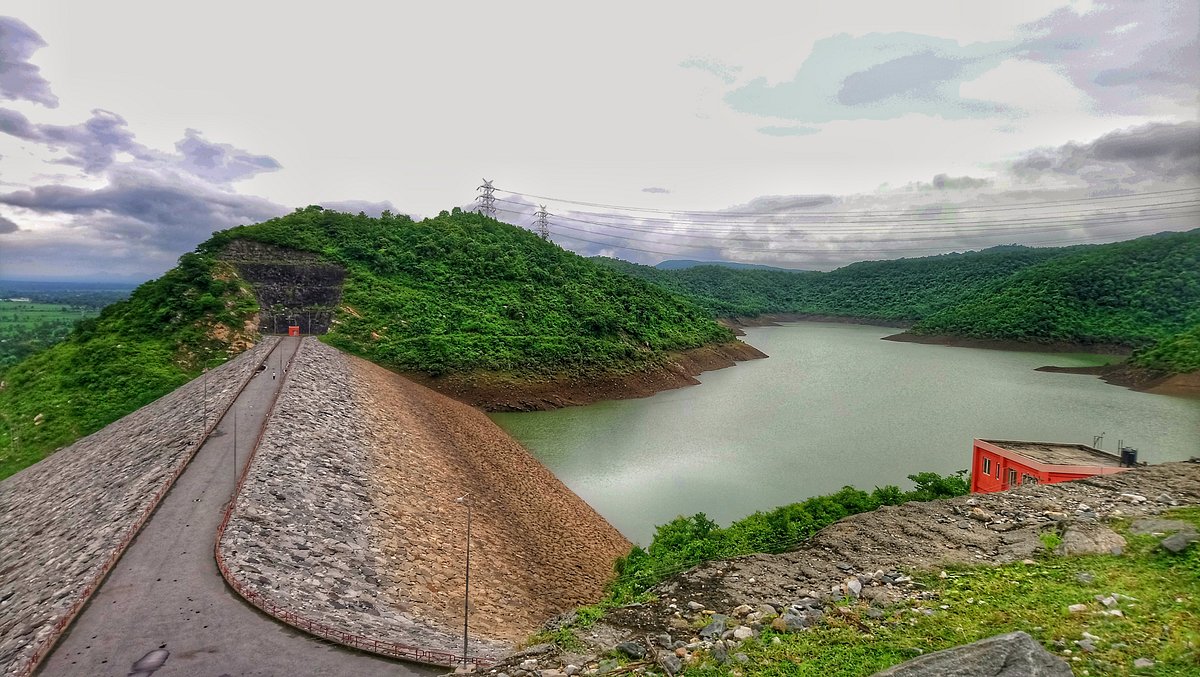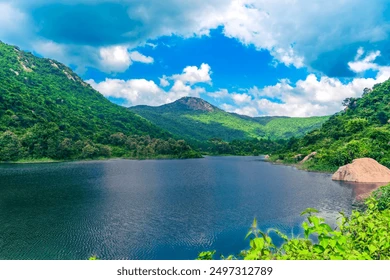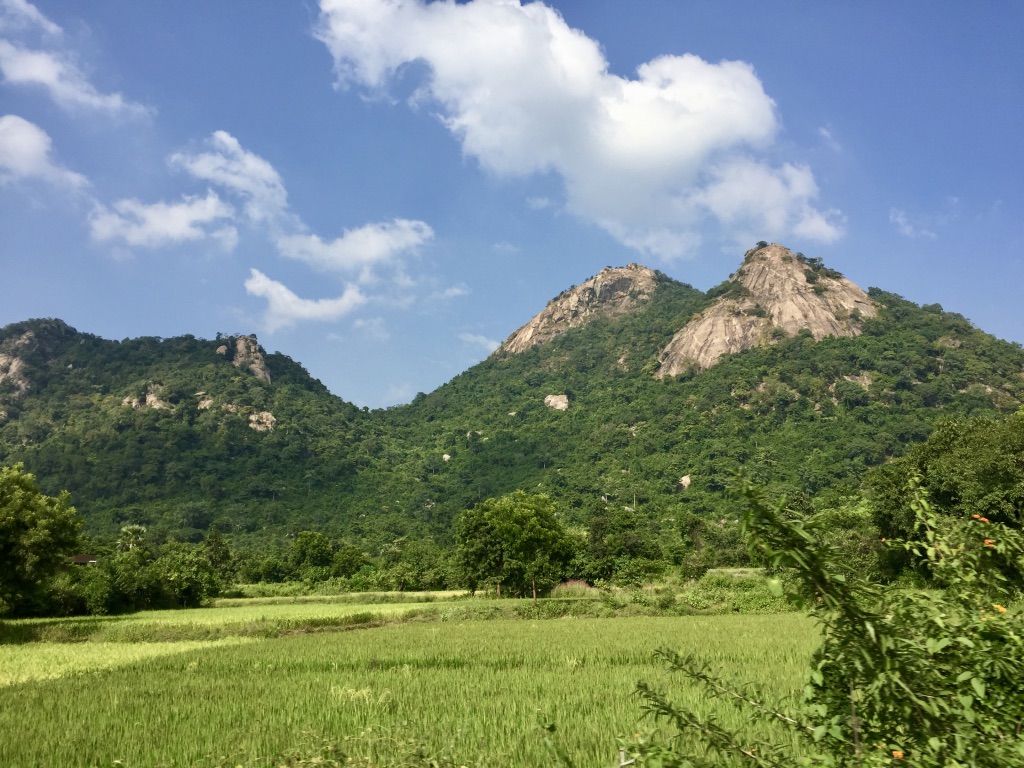About Ajodhya Hill
Ajodhya Hills is a small plateau surrounded by hills, situated in the Purulia district of West Bengal, India. It forms the easternmost section of the Chhotanagpur Plateau and is an extension of the Eastern Ghats range. Chamtuburu, standing at 720 meters, is the highest peak in the Ajodhya Hills. The closest town to this area is Bagmundi . This area is a favoured destination for aspiring mountaineers to undergo basic rock climbing training. To reach Ajodhya Hills, travelers can choose between two routes: one through Jhalda and the other through Sirkabad.
- Places to see on your Trip to Ayodhya Hills in Purulia: A tour to Ayodhya Pahar circuit includes the following tourist places –
- sitakunda:( Distance from Ajodhya hill top – 1 km) Sita Kund is a small, shallow water body located in Bagandi village, known for its cold water that bubbles up from a white sandy base. What adds to the intrigue of this place is the fascinating mythological story associated with it.
- Mayur Pahar: (Distance from Ajodhya hill top – 2 km)Mayur Pahar, standing 605 meters above sea level, provides a breathtaking panoramic view of the Ayodhya hills region. A favorite picnic destination for locals, the hilltop also features a small temple, adding to its appeal.
- Durga Bera/ Tarpania Lake/ Marble Lake: (Distance from Ajodhya hill top – 7 km) Marble Lake, also known as Tarpania Lake, was formed as a result of extracting hard rocks used in the construction of the PPSP dam. Located in the village of Tarpania, the area is characterized by scattered rocks and boulders surrounding the lake.
- Bamni Falls:( Distance from Ajodhya hill top 7 km ) In the heart of a forest, we encountered a mesmerizing cascade of silky water flowing gracefully down a rocky face. To reach Bamni Falls, the highlight of our visit to the Ayodhya Hills in Purulia, we had to navigate nearly 100 steps descending from the main road.This stunning waterfall is a favorite among locals, evident as the stairs wind through a long line of quaint souvenir shops, showcasing its popularity. The ideal time to experience the falls is during the monsoon season when they are at their most majestic.
- PPSP Dams: (Distance from Ajodhya hilltop – Upper Dam is 6km and the Lower Dam is 11 km) The Purulia Pumped Storage Project (PPSP), located in the Ayodhya Hills, is a significant hydroelectric power plant in India and began operations in 2008. At its core, the project consists of two large rock-fill dams, known as the Upper Dam and Lower Dam, which are used for water storage. These dams are situated in the Baghmundi block, along the route from the Ayodhya hilltop to Baghmundi.
- Charidah village: (distance from ayodhya hill top -16km ) Charida is a village known for its Chau mask makers, where vibrant, colorful masks depicting animal faces and characters from epics are crafted by numerous families. Visitors can see the intricate process of mask-making in the many roadside workshops and have the opportunity to buy these unique masks directly from the artisans. The tradition of Chau mask-making in Charida dates back nearly 150 years, originating during the reign of King Madan Mohan Singh Deo of Baghmundi. The craft gained recognition thanks to renowned Chau dancer Gambhir Singh Mura, a Padma Shri awardee. The Purulia Chau mask is also registered as a Geographical Indication in India.
- Murguma Lake:(Distance from Ajodhya hill top – 19 km) one of the most scenic lakes in Purulia. Nestled amidst hills on three sides, the lake is particularly stunning at sunset.Located on the route from Ayodhya Hilltop to Jhalda, Murguma Lake was formed by damming Girgiri Nala, a tributary of the Kansai River.
- Matha Forest and Sonakupi village: (Distance from ayodhya hill top- 20 km)Matha Forest is located en route to Balarampur and lies at the base of Mathaburu (Matha Hill), making it a favored destination for campers and climbers. The WBFDC bungalow provides a comfortable accommodation option in the area.Sonakupi village, situated at the base of Kukuburu Hill, offers a lovely camping facility that allows visitors to immerse themselves in the beauty of nature.
- Khairabera Lake: ( distance from ayodhya hill top -25 km ) Khairabera Lake, located at the base of Chamtaburu Hill, is a serene waterbody formed as part of the Khairabera Irrigation Dam. A picturesque, narrow road winds through the charming villages of Bukadi and Barda, flanked by expansive agricultural fields.A single resort sits by the lake, offering accommodations in cozy cottages or tents. Guests can enjoy a variety of activities, such as nature walks, hiking, kayaking, fishing in the lake, and cycling through the scenic village roads.
- Pakhi Pahar: (Distance from ayodhya hill top -27 km) Murraburu Hill, commonly known as Pakhi Pahar, derives its name from the numerous bird sculptures carved into its rock face by the dedicated sculptor Chitta Dey and his team. For over thirty years, Dey has tirelessly worked to create a stunning bas relief featuring various birds, transforming the hill into a popular tourist destination. He began by training a small group of local youths in rock sculpture and painting, and he has established a school to educate and empower more young people, helping them forge sustainable livelihoods.
- Deulghata Temple: ( distance from ayodhya hill top -33 km) Deulghata is a hidden gem in Purulia, with historical ties to the Jain settlements in Bengal during the 11th and 12th centuries under the Sena Empire. During this period, around 15 temples were constructed using bricks, featuring the traditional “Rekh Deul” architectural style. This design consists of tall, tower-like structures resembling a sugarloaf, which functioned to enclose and safeguard the sanctum or Garbhagriha. Similar ancient deuls, though now in ruins, can still be found in other regions of Bengal.
- Pardi dam : (Distance from ayodhya hill top -35 km) The journey to Pardi Dam takes you through Pardi village and concludes at this irrigation dam located on the Kathaljhuri river.This dam is nestled among hills on three sides, and as the day winds down, the calm waters of Pardi Lake beautifully reflect the hills, creating a truly enchanting sight. Pardi Dam is one of the top hidden gems for tourists exploring the Ayodhya Hills in Purulia.
- Disum Sendra or Sikar Parab – It is a hunting festival celebrated by the Santhal community in the Ayodhya Hills areas. This festival is held in April.
- Bandhna Parab – It is celebrated by most tribes in Purulia. Animals used for farming are worshipped as the god during this festival. Tribal families paint their houses with vibrant colours during this time. This festival is held in October/ November.
- Tushu Parab – This is celebrated by rural women who share their joy, sorrow and experiences with Tusurani (an imaginary character) by making folk songs. Tushu Parab is held during December every year.


How to reach Ajodhya Hill
By air : The nearest airports to Purulia are Netaji Subhas Chandra Bose International Airport in Kolkata and Kazi Nazrul Islam Airport in Durgapur. From Kolkata, you can reach Purulia by cab, bus, or train.
- By Train : Purulia district is served by its own railway station, which functions as a junction since all long-distance trains make stops there. Direct train services link Purulia with major regions across India, such as Delhi, Odisha, and Kolkata. Additionally, the district enjoys strong rail connectivity with nearby cities like Asansol, Chakradharpur, Burdwan, and Kharagpur.
- Trains from Howrah to Purulia and Barabhum
- 58011 HWH ADRA CKP/BKSC Passenger
- 12865 HWH PRR Lalmati Exp ,
- 22891 HWH RNC Intercity Exp ,
- 12883 HWH PRR RupashiBangla Exp (Purulia only)
- By Road : Purulia has a well-developed road network connecting it to other districts and regions of West Bengal. Regular bus services and cab facilities operate between Purulia and nearby cities. In addition to government-run buses, private bus services also provide links between Purulia and all districts of West Bengal.
Best timeTo visit in Ajodhya Hill
- peak season(september to march ): The best time to visit Purulia is from September to March when the weather is pleasantly cool, with average temperatures ranging from 12-25 degrees Celsius. This is an ideal time for sightseeing and exploring the district's famous attractions such as Ajodhya Hills, Joychandi Pahar, and the ancient ruins of Gark Panchkot.During this peak season, Purulia is bustling with tourists, so accommodation rates can be a bit higher. However, the district's vibrant atmosphere and the numerous cultural events taking place, especially the famous Chhau dance festival, make it worth the visit.
- Moderate Season (july to august): The monsoon season in Purulia falls between July and August. The district receives moderate rainfall during this period, and the temperature ranges between 25-30 degrees Celsius. The rains bring a fresh lease of life to the district, making it look even more beautiful.Accommodation rates during this period are relatively lower, making it a good time for budget travellers to explore the district.
- Off Season ( april to june) :
Ajodhya Hill Traveler's Stories
No stories found.
